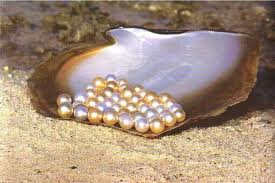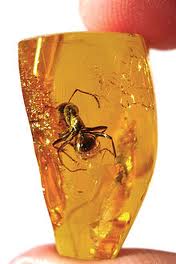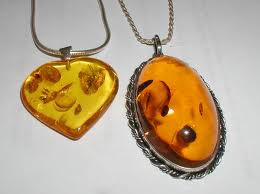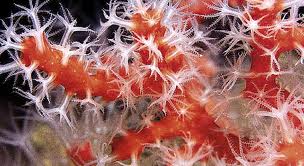It looks like you're using an Ad Blocker.
Please white-list or disable AboveTopSecret.com in your ad-blocking tool.
Thank you.
Some features of ATS will be disabled while you continue to use an ad-blocker.
7
share:
Pearls
One of the most beatiful natural gemstone made by a mollusk,very valuable , aoppreciated and well known all around he world.

easyvoyage.co.uk
en.wikipedia.org...
Therefore we have the world largest pearl
www.thepearlmarket.co.uk...

www.thepearlmarket.co.uk...
and of course,
Burl Ives - Pearly Shells
Amber
en.wikipedia.org...

en.wikipedia.org
en.wikipedia.org...

en.wikipedia.org
Corals
en.wikipedia.org...

oceanservice.noaa.gov

rubylane.com
Nature give us so much ...and we....
Well these are few examples if you know and others....
One of the most beatiful natural gemstone made by a mollusk,very valuable , aoppreciated and well known all around he world.

easyvoyage.co.uk
A pearl is a hard object produced within the soft tissue (specifically the mantle) of a living shelled mollusk. Just like the shell of a mollusk, a pearl is made up of calcium carbonate in minute crystalline form, which has been deposited in concentric layers. The ideal pearl is perfectly round and smooth, but many other shapes of pearls (baroque pearls) occur.
The finest quality natural pearls have been highly valued as gemstones and objects of beauty for many centuries, and because of this, the word pearl has become a metaphor for something very rare, fine, admirable, and valuable. The most valuable pearls occur spontaneously in the wild, but they are extremely rare. These wild pearls are referred to as natural pearls.
Cultured or farmed pearls from pearl oysters and freshwater mussels make up the majority of those that are currently sold. Imitation pearls are also widely sold in inexpensive jewelry, but the quality of their iridescence is usually very poor, and often, artificial pearls are easily distinguished from genuine pearls. Pearls have been harvested and cultivated primarily for use in jewelry, but in the past they were also stitched onto lavish clothing. Pearls have also been crushed and used in cosmetics, medicines, and in paint formulations. Whether wild or cultured, gem quality pearls are almost always nacreous and iridescent, as is the interior of the shell that produces them.
However, almost all species of shelled mollusks are capable of producing pearls (formally referred to as "calcareous concretions" by some sources) of lesser shine or less spherical shape. Although these may also be legitimately referred to as "pearls" by gemological labs and also under U.S. Federal Trade Commission rules,[1] and are formed in the same way, most of them have no value, except as curiosities.
en.wikipedia.org...
Therefore we have the world largest pearl
The Pearl of Allah, is the largest known pearl measuring 9.45 inches in diameter and weighing 6.4 kilograms (14.1 lb). The 2006 appraisal value was US$61,850,000. The pearl was taken from a giant clam off the coast of Palawan in May 1934 by a Filipino diver. Probably the most famous pearl is the 'Hope Pearl' named after it's owner Henry Hope and displayed in the Natural History Museum in London. The pearl was found early in the 19th Century and weighs about 90 grams. More recently, a silver coloured pearl (shown right) weighing a whopping 170 grams was found on the seabed off an island of Myanmar (Burma). It's understood that the fisherman who found the pearl donated it to the military government, thus avoiding the unpleasantness associated with an involuntary donation.
www.thepearlmarket.co.uk...

www.thepearlmarket.co.uk...
and of course,
Burl Ives - Pearly Shells
Amber
Amber is fossilized tree resin (not sap), which has been appreciated for its color and natural beauty since Neolithic times.[2] Amber is used as an ingredient in perfumes, as a healing agent in folk medicine, and as jewelry. There are five classes of amber, defined on the basis of their chemical constituents. Because it originates as a soft, sticky tree resin, amber sometimes contains animal and plant material as inclusions. Amber occurring in coal seams is also called resinite, and the term ambrite is applied to that found specifically within New Zealand coal seams.[3]
en.wikipedia.org...

en.wikipedia.org
The English word amber derives from the Arabic anbar, via Medieval Latin ambar and Old French ambre. The word originally referred to a solid waxy substance derived from the sperm whale (now called ambergris). The sense was extended to fossil resin circa 1400, and this became the main sense, as the use of ambergris waned.[4] The two substances were confused, because they both were found washed up on beaches. Ambergris is less dense than water and floats, whereas amber is less dense than stone, but too dense to float.[5] The word ambar was brought to Europe by the Crusaders. In French ambre gris (lit. gray amber), became used for ambergris, while ambre jaune (yellow amber), denoted the fossil resin we now call amber.
en.wikipedia.org...

en.wikipedia.org
Corals
Corals are marine animals in class Anthozoa of phylum Cnidaria typically living in compact colonies of many identical individual "polyps". The group includes the important reef builders that inhabit tropical oceans and secrete calcium carbonate to form a hard skeleton. A coral "head" is a colony of myriad genetically identical polyps. Each polyp is a spineless animal typically only a few millimeters in diameter and a few centimeters in length. A set of tentacles surround a central mouth opening. An exoskeleton is excreted near the base. Over many generations, the colony thus creates a large skeleton that is characteristic of the species. Individual heads grow by asexual reproduction of polyps. Corals also breed sexually by spawning: polyps of the same species release gametes simultaneously over a period of one to several nights around a full moon. Although corals can catch small fish and plankton, using stinging cells on their tentacles, most corals obtain the majority of their energy and nutrients from photosynthetic unicellular algae called zooxanthellae that live within the coral's tissue. Such corals require sunlight and grow in clear, shallow water, typically at depths shallower than 60 metres (200 ft). Corals can be major contributors to the physical structure of the coral reefs that develop in tropical and subtropical waters, such as the enormous Great Barrier Reef off the coast of Queensland, Australia. Other corals do not have associated algae and can live in much deeper water, with the cold-water genus Lophelia surviving as deep as 3,000 metres (9,800 ft).[3] Examples live on the Darwin Mounds located north-west of Cape Wrath, Scotland. Corals have also been found off the coast of the U.S. in Washington State and the Aleutian Islands in Alaska.
en.wikipedia.org...

oceanservice.noaa.gov

rubylane.com
Nature give us so much ...and we....
Well these are few examples if you know and others....
Amazing isn't it? As a jewelry maker and one who loves jewelry and nature, I appreciate this thread very much. Thanks!
reply to post by Night Star
As a man not much into jewelry I can also appreciate seeing these creatures. Pretty amazing. Neat read.
As a man not much into jewelry I can also appreciate seeing these creatures. Pretty amazing. Neat read.
Ah, this world is full of beauty. If people only knew how easy it is to find precious stones/metals in some areas of the world by putting some hard
work, we would have a lot more people making a living this way.
In the U.S. there are areas where several preciouss stones can be found, from Ruby, to Emeralds, sapphire, and even diamonds, which with the exception of diamonds most of other preciouss gems can be found by almost anyone.
The only problem is that "in the name of the environment" environmentalists have made it impossible for regular people to make a living off precious gems that they can find. Even if you find for example emeralds already broken from their mother load it is illegal to get them out, as many of these are found within state parks...
Instead even environmentalists allow BIG CORPORATIONS to be the ones to find and sell most precious gems.
Large Corporations are the ones who truly destroy the environment trying to get as many precious gems as possible in the least amont of time.
There are still many areas in the U.S., and other places around the world where precious stones and metals can be found, but many of these places are leased or even sold to large corporations, meanwhile the regular joe and jane will get jail time and a hefty fine if you try to get these precious stones and metals that nature gives FREELY TO EVERYONE...
It does involve some hard work, and to this day there are still some people who live by prospecting gold and silver, which some states and the federal government allows to find but only in some areas.
If people were given the ability to find and sell these precious stones and metals, without using dredging or heavy machinery, the environment would suffer a lot less and with today's technology which allows us to find such precious stones and metals easier there would be a lot more people making a living by finding and selling these treasures that nature has for EVERYONE OF US who is willing to work for it.
In the U.S. there are areas where several preciouss stones can be found, from Ruby, to Emeralds, sapphire, and even diamonds, which with the exception of diamonds most of other preciouss gems can be found by almost anyone.
The only problem is that "in the name of the environment" environmentalists have made it impossible for regular people to make a living off precious gems that they can find. Even if you find for example emeralds already broken from their mother load it is illegal to get them out, as many of these are found within state parks...
Instead even environmentalists allow BIG CORPORATIONS to be the ones to find and sell most precious gems.
Large Corporations are the ones who truly destroy the environment trying to get as many precious gems as possible in the least amont of time.
There are still many areas in the U.S., and other places around the world where precious stones and metals can be found, but many of these places are leased or even sold to large corporations, meanwhile the regular joe and jane will get jail time and a hefty fine if you try to get these precious stones and metals that nature gives FREELY TO EVERYONE...
It does involve some hard work, and to this day there are still some people who live by prospecting gold and silver, which some states and the federal government allows to find but only in some areas.
If people were given the ability to find and sell these precious stones and metals, without using dredging or heavy machinery, the environment would suffer a lot less and with today's technology which allows us to find such precious stones and metals easier there would be a lot more people making a living by finding and selling these treasures that nature has for EVERYONE OF US who is willing to work for it.
edit on 15-7-2012 by ElectricUniverse because: (no reason given)
new topics
-
Bobiverse
Fantasy & Science Fiction: 2 hours ago -
Florida man's trip overseas ends in shock over $143,000 T-Mobile phone bill
Social Issues and Civil Unrest: 2 hours ago -
Former Labour minister Frank Field dies aged 81
People: 4 hours ago -
SETI chief says US has no evidence for alien technology. 'And we never have'
Aliens and UFOs: 6 hours ago -
This is our Story
General Entertainment: 8 hours ago -
President BIDEN Vows to Make Americans Pay More Federal Taxes in 2025 - Political Suicide.
2024 Elections: 11 hours ago -
Ode to Artemis
General Chit Chat: 11 hours ago
top topics
-
President BIDEN Vows to Make Americans Pay More Federal Taxes in 2025 - Political Suicide.
2024 Elections: 11 hours ago, 14 flags -
Should Biden Replace Harris With AOC On the 2024 Democrat Ticket?
2024 Elections: 17 hours ago, 6 flags -
One Flame Throwing Robot Dog for Christmas Please!
Weaponry: 15 hours ago, 6 flags -
Don't take advantage of people just because it seems easy it will backfire
Rant: 15 hours ago, 4 flags -
Ditching physical money
History: 15 hours ago, 4 flags -
SETI chief says US has no evidence for alien technology. 'And we never have'
Aliens and UFOs: 6 hours ago, 4 flags -
Former Labour minister Frank Field dies aged 81
People: 4 hours ago, 4 flags -
Florida man's trip overseas ends in shock over $143,000 T-Mobile phone bill
Social Issues and Civil Unrest: 2 hours ago, 4 flags -
Ode to Artemis
General Chit Chat: 11 hours ago, 3 flags -
This is our Story
General Entertainment: 8 hours ago, 3 flags
7
